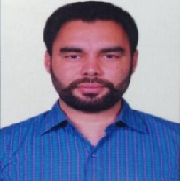
Amanjot Singh Toor
Work place: Department of Instrumentation & Control, Dr. B.R Ambedkar National Institute of Technology, Jalandhar, India
E-mail: er.amanjot87@gmail.com
Website:
Research Interests: Computer Networks, Network Architecture
Biography
Amanjot Singh Toor was born in Hoshiarpur, Punjab, India on June 04th, 1987. He received B.Tech Degree in Electronics & communication Engineering from SBBSIET, Jalandhar, Punjab, India in 2010 and M.Tech Degree in Electronics & communication Engineering from GNE College, Ludhiana, Punjab, India in 2013. He is Research Scholar at Department Of Instrumentation and Control Engineering, Dr. B. R. Ambedkar National Institute of Technology, Jalandhar, Punjab, India. He has published several papers in National & International Conferences, International Journals on Wireless Sensor Network, Optical Communication. His research area of interest is Wireless Sensor Networks.
Author Articles
A Novel Energy Efficient Routing Protocol EACBM for Scalable Wireless Sensor Networks
By Amanjot Singh Toor A.K. Jain
DOI: https://doi.org/10.5815/ijcnis.2018.05.02, Pub. Date: 8 May 2018
Recent advancements in the field of wireless communication results in the improvement of Wireless Sensor Networks (WSNs) having low powered, low cost and smallest multi-operational sensing units called Sensor Nodes (SNs). The limited battery life of these SNs is the major issue of WSNs. The dissipation of SN energy for transmitting information of one SN to Base Station (BS) is the major cause of depletion of SN energy. Also, SNs energy is in direct relation with battery lifetime of WSNs. Due to which WSN is affected in terms of scalability, a lifetime of network and energy efficiency. Many routing protocols have been proposed to overcome this issue and clustering is the most dominant scheme in which the whole network is divided into small clusters. This clustering scheme is based on the principle of divide and conquers along with data aggregation. In this paper, authors propose a new routing protocol i.e. Energy Aware Cluster Based Multi-hop (EACBM) which uses the principle of clustering and multi-hop communication pattern for transferring information to BS. So that minimum SNs energy is consumed and hence increases the lifetime of WSN. It also uses the concept of sub-clustering to cover those areas of SNs where CH cannot reach to gather information or which cannot take part in any clustering process due to its far away position. Simulation results show that energy efficiency is greatly optimized by reducing the number of transmission distance between CH and BS via multi-hopping. It also shows how network lifetime, packets transmitted to BS and CH and number of dead SNs is affected by scaling i.e. by different network sizes (100*100m2; 500*500m2 and 1000*1000m2) in EACBM by comparing it with SEP, LEACH, CEEC and LEFCA routing protocols.
[...] Read more.Other Articles
Subscribe to receive issue release notifications and newsletters from MECS Press journals